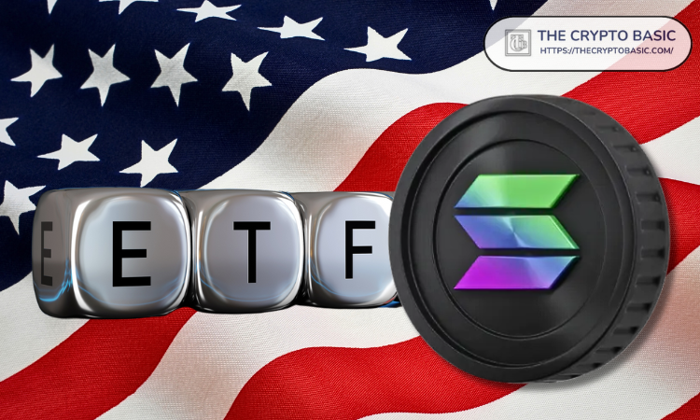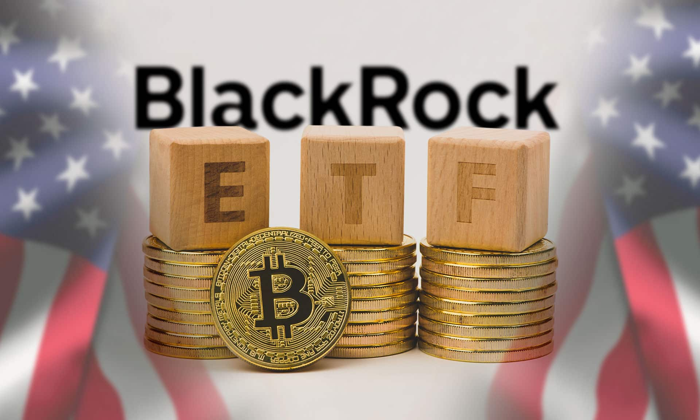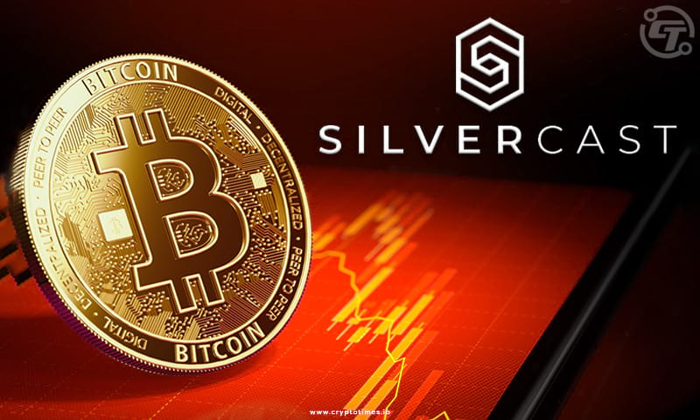Semiconductor exemptions under recent US tariffs have become a contentious topic, as they seem largely ineffective in alleviating the burdens faced by the semiconductor industry. Though presented as a relief, these exemptions barely scratch the surface, as many semiconductors enter the country embedded within finished products like GPUs, laptops, and smartphones, which still attract high tariffs. The tariff impact is magnified when considering that duties on these essential technologies can reach as high as 49%. With the advent of advanced technologies and AI innovation at stake, the lack of substantial relief could hinder progress significantly. Moreover, despite the investment initiatives promised by the CHIPS Act, these tariff hurdles continue to threaten the competitive edge of American manufacturing in the global market.
The discussion surrounding tariff relief for semiconductor components raises urgent questions about its effectiveness and the long-term implications for the technology sector. Referred to in various contexts as tariff exemptions for chip manufacturing, these measures appear to offer little practical aid when finished products remain subject to high import duties. As high-performance servers and graphic processing units—crucial for AI and machine learning—face escalating costs, the anticipated growth within this sector is jeopardized. The inconsistency in tariff regulations not only complicates strategic planning for technology firms but also undermines the objectives outlined in initiatives like the CHIPS Act. Therefore, understanding the landscape of semiconductor exemptions is essential to navigate the intricate dynamics between tariffs and tech innovation.
Understanding Semiconductor Exemptions in the Context of US Tariffs
Semiconductor exemptions from US tariffs may seem like a beneficial relief for the industry, but they’re largely ineffective when viewed in the broader context of economic reality. Most semiconductors enter the United States as components embedded in finished products, like smartphones and GPUs. As these products are still subject to heavy tariffs, the exemptions do little to alleviate the financial burden on companies that rely on these semiconductors for advanced applications. The net effect can be misleading, as political narratives celebrate these exemptions without addressing the substantial costs these companies still face.
From a strategic standpoint, the semiconductor industry is witnessing a paradox where tariffs are meant to stimulate domestic production yet end up harming it instead. The exemptions granted by previous administrations hold limited value against the backdrop of significant tariffs on finished goods. Companies are not only grappling with high import duties, but they are also facing the implications of these costs in terms of slowed innovation and growth in sectors that critically depend on semiconductors, particularly AI and tech-driven industries.
The Impact of Tariff Policies on AI Innovation
Tariff policies targeting the semiconductor industry pose significant risks to AI innovation, which is increasingly reliant on advanced hardware like GPUs and high-performance computing systems. With the ongoing tariffs, companies like Nvidia find themselves in a precarious position where essential components for AI development are subject to steep tariffs. This situation jeopardizes the smooth operation of AI infrastructure projects essential for training next-generation models and could decelerate progress in AI innovations across various industries.
Moreover, the objectives outlined in the CHIPS Act, which aims to boost domestic semiconductor manufacturing, are under threat from these tariffs. The cost of acquiring advanced manufacturing equipment is elevated due to the tariff regime, making it more challenging for domestic firms to ramp up production capabilities. This could have a cascading effect on AI applications across sectors like healthcare, finance, and defense, where timely access to advanced technology is critical for maintaining competitive advantages. As tariffs continue to distort the market, the potential for American leadership in AI could be at stake.
Indirect Costs: Barriers to Competitive Semiconductor Manufacturing
The semiconductor market is heavily interconnected, and the indirect costs arising from tariffs are a substantial barrier to achieving competitive manufacturing in the United States. While raw materials may enjoy exemptions, the finished products that American firms require are often subjected to hefty tariffs that undermine the cost benefits of domestic production. This discrepancy creates a disconnect where companies face inflated costs that hinder their operational efficiency and ability to invest in innovation.
Furthermore, the indirect effects of these tariffs disproportionately impact high-end technological systems essential for AI model training and infrastructure expansion. As costs rise, firms feel the pressure to either absorb these expenses or pass them on to consumers, which can slow down deployment and utilization of advanced technologies. The overall consequence of such barriers is an erosion of the competitive edge that the United States once maintained in high-tech areas, ultimately threatening economic growth and technological advancement.
The Role of Tariffs in Slowing Investment in the Tech Sector
With the current uncertainties surrounding tariffs, technology firms are facing a dilemma regarding future investments. A stable economic environment is crucial for making significant capital expenditures, yet the unpredictable tariff landscape has made companies hesitant to commit resources to expand operations or invest in new data centers. This predicament mirrors the chaos experienced during the supply chain disruptions of 2020, where companies canceled orders and postponed initiatives due to uncertainty.
If the tariff situation does not stabilize, we risk repeating history where prolonged uncertainty leads to further industry contraction. The continued volatility not only hampers current investments but also discourages new entrants into the market, stymieing competition that drives progress and innovation in the tech sector. As firms grapple with significant unpredictability in cost structures, the tech industry could find itself stunted in growth and innovation in the years to come.
Domestic Production Challenges Amidst Tariffs
Despite the intention behind tariffs to spur domestic semiconductor production, the reality is that these measures are leading to increased production costs rather than fostering growth. Though the CHIPS Act provides subsidies, many US semiconductor companies still rely on international sources for manufacturing. The tariffs only serve to inflate equipment prices, complicating the case for reshoring production to the US. As a result, the domestic industry faces challenges in achieving any competitive standstill as inflating costs are eating into potential profits.
Additionally, this reliance on international foundries raises questions about long-term sustainability and national security. The barriers imposed by tariffs mean that firms are not positioned to benefit fully from the legislative support intended to enhance domestic manufacturing. As these challenges persist, the industry must adapt or face stagnation, which could impede the overall technological advancement of the country, especially in areas like AI and defense technologies.
Consequences of Rising Costs on AI Project Viability
The rising costs of semiconductors due to tariffs present severe implications for the viability of AI projects, particularly those reliant on GPUs and other high-performance computing resources. With tariffs driving up hardware costs, project budgets can become strained, consequently affecting the overall profitability of innovative AI initiatives. This creates an environment where startups may struggle to sustain operations, leading to a potential decline in AI-driven advancements across various sectors.
Moreover, the pressure on costs may deter investment in promising AI ventures, especially among smaller firms that do not have the financial resilience of larger corporations. As innovators are squeezed by increasing expenses, we risk losing a wave of creativity and breakthroughs essential in shaping a sustainable digital economy. This stifling environment, exacerbated by tariff pressures, could lead to reduced dynamism in the tech ecosystem and slow the pace of innovation necessary to keep American technology competitive globally.
Looking Ahead: The Future of Tariffs and Semiconductor Innovation
As the semiconductor industry navigates the complexities of US tariffs, the path forward requires careful reconsideration of policy approaches. The current exemption frameworks appear insufficient and ineffective in promoting genuine growth and innovation in the semiconductor sector. Understanding the underlying cost dynamics is essential for policymakers who aim to support domestic manufacturing while fostering a robust environment for innovation in technologies like AI.
Moving forward, it is imperative for policymakers to reassess the impact of tariffs and adapt strategies that promote real stability and growth in the semiconductor industry. As AI innovation continues to be a focal point of economic strategy, a balanced tariff approach that encourages domestic production without stifling investments is critical. Recognizing the intricate connections within global supply chains will enable a legislative framework conducive to sustainable technological advancement and maintaining America’s leadership in critical industries.
Frequently Asked Questions
What are semiconductor exemptions in the context of US tariffs?
Semiconductor exemptions refer to the relief from US tariffs that were implemented during the Trump administration, aimed at encouraging domestic production in the semiconductor industry. However, these exemptions offer minimal practical benefits as most semiconductors enter the country embedded in finished products like laptops and smartphones, which still face high tariffs.
How do US tariffs impact the semiconductor industry?
US tariffs significantly affect the semiconductor industry by imposing high duties on finished products, such as servers and GPUs, which contain essential semiconductor components. Despite exemptions for raw semiconductor materials, the overall tariff burden raises costs and hampers investment in domestic manufacturing, threatening technological advancement and AI innovation.
What is the CHIPS Act and how does it relate to semiconductor exemptions?
The CHIPS Act is a US government initiative designed to promote domestic semiconductor production through substantial subsidies. However, the effectiveness of the CHIPS Act is undermined by existing tariffs on crucial equipment and finished products that incorporate semiconductors, which increases costs and stymies the intended growth in domestic manufacturing.
What challenges do semiconductor exemptions pose for AI innovation?
Semiconductor exemptions provide little relief for the AI sector because while raw materials may be exempt, the high tariffs on finished products like GPUs and servers elevate costs. This leads to increased financial pressure on AI projects, potentially stalling innovation and development in critical areas such as machine learning and data processing.
Are there indirect costs associated with semiconductor exemptions due to US tariffs?
Yes, the indirect costs related to semiconductor exemptions arise when tariffs on finished products, such as servers and GPUs, increase overall expenses for the semiconductor supply chain. These costs negate any competitive advantages gained from domestic manufacturing and inhibit investment in AI expansion and infrastructure development.
How do semiconductor tariffs create uncertainty in investment decisions?
The unpredictable nature of semiconductor tariffs creates a detrimental environment for investment, stalling technology companies’ decisions to commit to new projects like data centers and manufacturing lines. This uncertainty mirrors past supply chain disruptions and poses economic risks to the semiconductor sector as firms navigate unpredictable costs.
Why are domestic semiconductor production efforts complicated by tariffs?
Domestic semiconductor production is complicated by tariffs because, despite incentives from the CHIPS Act, many US companies still rely on international foundries for manufacturing. Tariffs on critical equipment raise operational costs, making it challenging to achieve sustainable domestic production of semiconductors.
What effect do semiconductor tariffs have on blockchain and cryptocurrency sectors?
Semiconductor tariffs adversely affect the blockchain and cryptocurrency sectors by elevating hardware costs necessary for AI-driven projects and mining operations. These increased expenses can hamper profitability, stall innovation, and create significant challenges for smaller companies and startups in the competitive tech ecosystem.
What might be the long-term consequences of current semiconductor tariff policies?
Long-term consequences of current semiconductor tariff policies may include hindered technological advancement, slowed infrastructure projects, and a weakened competitive edge in AI innovation. The continuation of these tariffs could deter investments and create challenges for both established companies and emerging startups, threatening the future of the US tech landscape.
| Key Point | Explanation |
|---|---|
| Symbolic Semiconductor Exemptions | Most semiconductors enter the US through finished products like laptops and phones, which are still subject to high tariffs. |
| High Tariff Rates | Duties can reach up to 49%, and essential components such as Nvidia’s DGX systems are not exempt, risking critical infrastructure projects. |
| Impact on the CHIPS Act | Tariffs on equipment complicate the objectives of the CHIPS Act by raising costs for necessary manufacturing tools. |
| Indirect Costs from Tariffs | Exemptions on raw materials become meaningless when finished products incur significant tariffs, increasing overall costs in supply chains. |
| Investment Stalemate | Uncertain tariff policies stall investment in technology sectors and create a volatile economic environment. |
| Domestic Production Challenges | Tariffs do not effectively promote domestic semiconductor manufacturing due to reliance on international foundries. |
| Risks to AI Projects | Increased hardware costs affect profitability and innovation in blockchain and AI sectors, particularly harming smaller firms. |
| Need for Policy Adaptation | Policymakers must act to adjust strategies before tariffs inflict irreversible harm on technological advancements in the US. |
Summary
Semiconductor exemptions are largely ineffective due to the significant tariffs still imposed on finished products that contain these semiconductors. With high costs affecting the overall tech industry and investment decisions stalled due to tariff uncertainty, the intended benefits of these exemptions fall short. As the global semiconductor supply chain becomes increasingly intricate, it is crucial for US policymakers to acknowledge and rectify these issues to protect and foster innovation in the semiconductor sector.
Semiconductor exemptions from US tariffs offer a glimmer of hope for the semiconductor industry, yet they often prove largely ineffective. With many semiconductors embedded in finished products such as servers, GPUs, laptops, and phones, the intended relief is diminished, as these items still face steep tariffs. The impact of these tariffs can be felt across the entire technology sector, particularly in the realms of AI innovation and infrastructure projects that are critical to the future of digital economies. Although the CHIPS Act aims to bolster domestic chip production, the ongoing tariff barrier threatens to undermine these efforts by raising costs on essential manufacturing equipment. As the tariffs continue to create a complex financial landscape, the potential for stifling growth and innovation in the semiconductor industry becomes increasingly apparent.
In the ongoing discussion surrounding import duties, the term “tariff exemptions” can be understood as a measure intended to alleviate the financial burden on the semiconductor sector. However, the real-world implications of these provisions seem muted, as many key components remain subject to significant tariffs. The interplay between these tariffs and the burgeoning sectors of AI and technology raises critical questions about the viability of domestic semiconductor production. As policymakers navigate this landscape, it becomes crucial to assess the effectiveness of these exemptions against the broader backdrop of economic strategies like the CHIPS Act. Ultimately, without a coherent approach, the ambition to pave the way for a thriving semiconductor industry may lead to unforeseen consequences in the evolving market.














